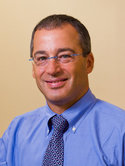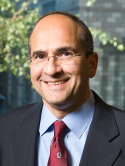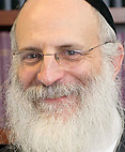Evaluation of bone height in osseous free flap mandible reconstruction: An indirect measure of bone mass Journal Article
| Authors: | Disa, J. J.; Hidalgo, D. A.; Cordeiro, P. G.; Winters, R. M.; Thaler, H. |
| Article Title: | Evaluation of bone height in osseous free flap mandible reconstruction: An indirect measure of bone mass |
| Abstract: | Osseous free flaps have become the preferred method of mandibular reconstruction after oncologic surgical ablation. To elucidate the long-term effects of free flap mandibular reconstruction on bone mass, maintenance or reduction in bone height over time was used as an indirect measure of preservation or loss in bone mass. Factors potentially influencing bone mass preservation were evaluated; these included site of reconstruction (central, body, ramus), patient age, length of follow-up, adjuvant radiotherapy, and the delayed placement of osseointegrated dental implants. A retrospective analysis of patients undergoing osseous free flap mandible reconstruction for oncologic surgical defects between 1987 and 1995 was performed. Postoperative Panorex examinations were used to evaluate bone height and bony union after osteotomy. Fixation hardware was used as a reference to eliminate magnification as a possible source of error in measurement. There were 48 patients who qualified for this study by having at least 24 months of follow- up. There were 27 male and 21 female patients, with a mean age of 45 years (range, 5 to 75 years). Mandibular defects were anterior (24) and lateral (24). Osseous donor sites included the fibula (35), radius (6), scapula (4), and ilium (3). There were between zero and four segmental osteotomies per patient (excluding the ends of the graft). Nineteen percent of all patients had delayed placement of osseointegrated dental implants. Initial Panorex examinations were taken between 1 and 9 months postoperatively (mean, 2 months). Follow-up Panorex examinations were taken 24 to 104 months postoperatively (mean, 47 months). The bony union rate after osteotomy was 97 percent. Bone height measurements were compared by site and type of reconstruction. The mean loss in fibula height by site of reconstruction was 2 percent in central segments, 7 percent in body segments, and 5 percent in ramus segments. The mean loss in bone height after radial free flap mandible reconstruction was 33 percent in central segments and 37 percent in body segments; ramus segments did not lose height. The central and body segments reconstructed with scapular free flaps did not lose height, but one ramus segment lost 20 percent of height. There was no loss in bone height in mandibular body reconstruction with the ilium free flap. Fibula free flaps did not significantly lose bone height when evaluated with respect to age, follow-up, radiation therapy, or dental implant placement. The retention in bone height demonstrated in this study suggests that bone mass is preserved after osseous free flap mandible reconstruction. The greatest amount of bone loss was seen after multiply osteotomized radial free flaps were used for central mandibular reconstruction. The ability of the fibula free flap to maintain mass over time, coupled with its known advantages, further supports its use as the 'work horse' donor site for mandible reconstruction. |
| Keywords: | adolescent; adult; child; clinical article; treatment outcome; aged; child, preschool; middle aged; bone transplantation; reconstructive surgical procedures; retrospective studies; donor site; surgical flaps; follow up; risk factor; age; risk assessment; bone mass; free tissue graft; mandibular neoplasms; osteotomy; mandible reconstruction; tooth implantation; bone atrophy; fracture healing; humans; human; male; female; priority journal; article |
| Journal Title: | Plastic and Reconstructive Surgery |
| Volume: | 103 |
| Issue: | 5 |
| ISSN: | 0032-1052 |
| Publisher: | Lippincott Williams & Wilkins |
| Date Published: | 1999-04-01 |
| Start Page: | 1371 |
| End Page: | 1377 |
| Language: | English |
| PUBMED: | 10190433 |
| PROVIDER: | scopus |
| DOI: | 10.1097/00006534-199904050-00005 |
| DOI/URL: | |
| Notes: | Article -- Export Date: 16 August 2016 -- Source: Scopus |
Altmetric
Citation Impact
BMJ Impact Analytics
Related MSK Work






